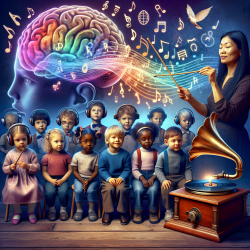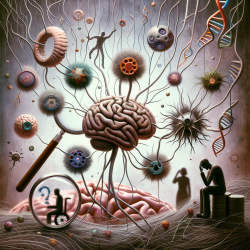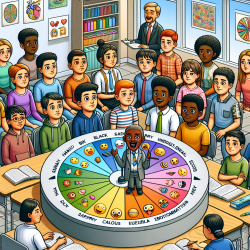Introduction
In the realm of speech-language pathology, leveraging music perception (MP) as a tool for enhancing therapeutic outcomes is gaining traction. The research article "Assessing Music Perception in Young Children: Evidence for and Psychometric Features of the M-Factor" provides a robust framework for understanding how music perception can be a pivotal component in early diagnosis and intervention for speech and language disorders.
The M-Factor: A New Dimension in Music Perception
The study introduces the concept of the "m-factor," a general music perception factor akin to Charles Spearman's g-factor of intelligence. This factor accounts for 93% of the reliable variance in music perception measurement, offering a comprehensive assessment tool that transcends traditional verbal-based evaluations. The m-factor encompasses seven specific domains of music perception: contour, loudness, scale, timbre, duration, pitch, and meter, which collectively inform a child's auditory stimulus apprehension.
Implications for Speech Therapy
For practitioners in speech-language pathology, integrating the m-factor into therapy sessions can provide a non-verbal assessment tool that is invariant across age, sex, and type of school. This invariance ensures that the assessment is equitable and applicable to diverse populations, a crucial aspect when tailoring interventions for children with varying backgrounds and abilities.
Practical Applications
Implementing music perception assessments in therapeutic settings can enhance the diagnosis of speech and language difficulties by:
- Identifying children who may benefit from music-based interventions, particularly those with specific language impairments (SLI) or dyslexia.
- Utilizing music perception as a universal marker for language acquisition, providing insights into the cognitive resources shared between grammar and rhythm.
- Offering a robust, reliable measure that can track progress over time, independent of verbal skills.
Encouraging Further Research
While the m-factor provides a solid foundation, further research is encouraged to explore its applications across different cultural contexts and its potential in longitudinal studies to track developmental trajectories in music perception and language acquisition. Researchers and practitioners are invited to delve deeper into the psychometric properties of music perception tools and their implications for speech therapy.
Conclusion
The integration of music perception insights into speech therapy offers a promising avenue for enhancing therapeutic outcomes. By embracing the m-factor and its robust assessment capabilities, practitioners can better support children in overcoming speech and language challenges.
To read the original research paper, please follow this link: Assessing Music Perception in Young Children: Evidence for and Psychometric Features of the M-Factor.










